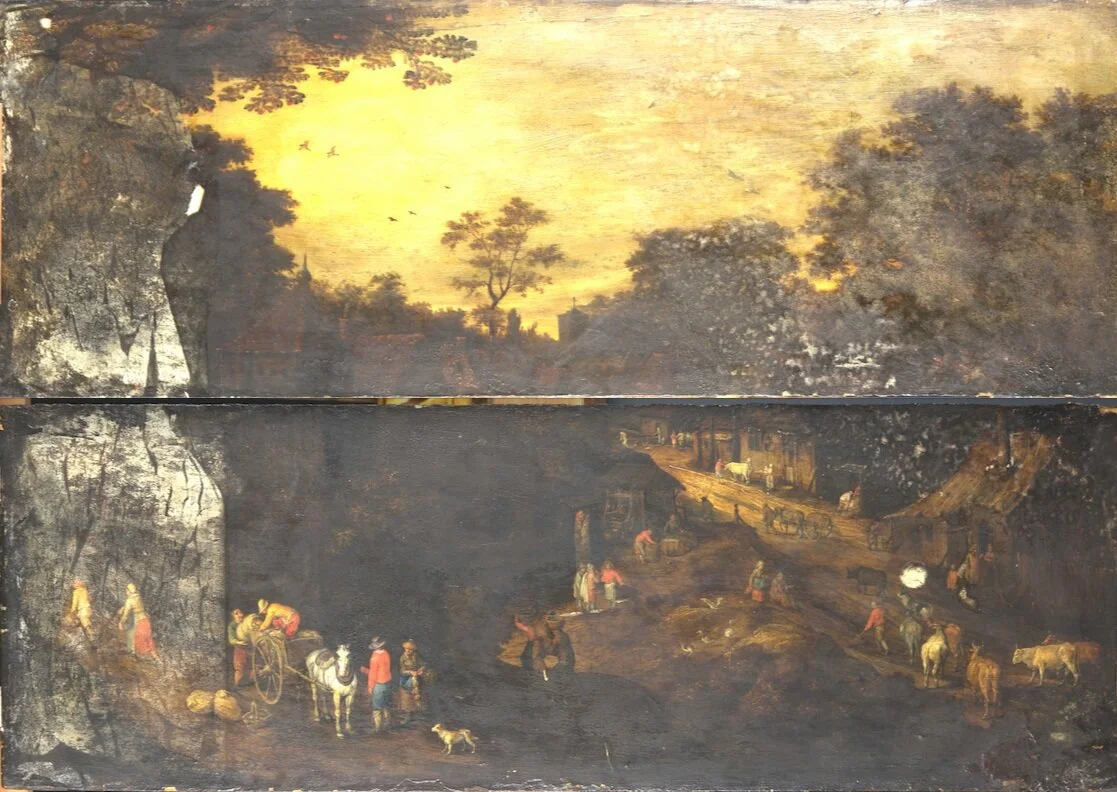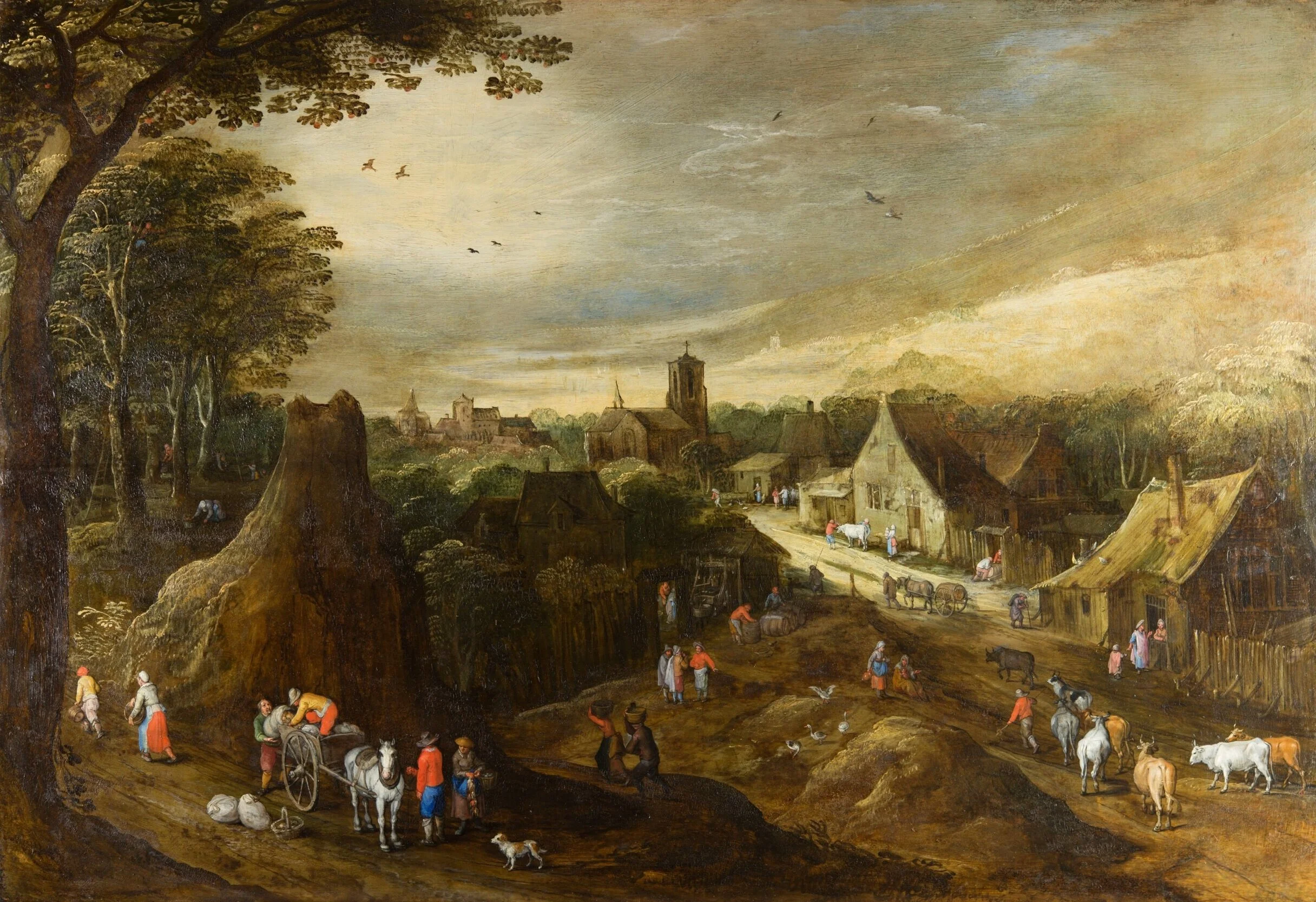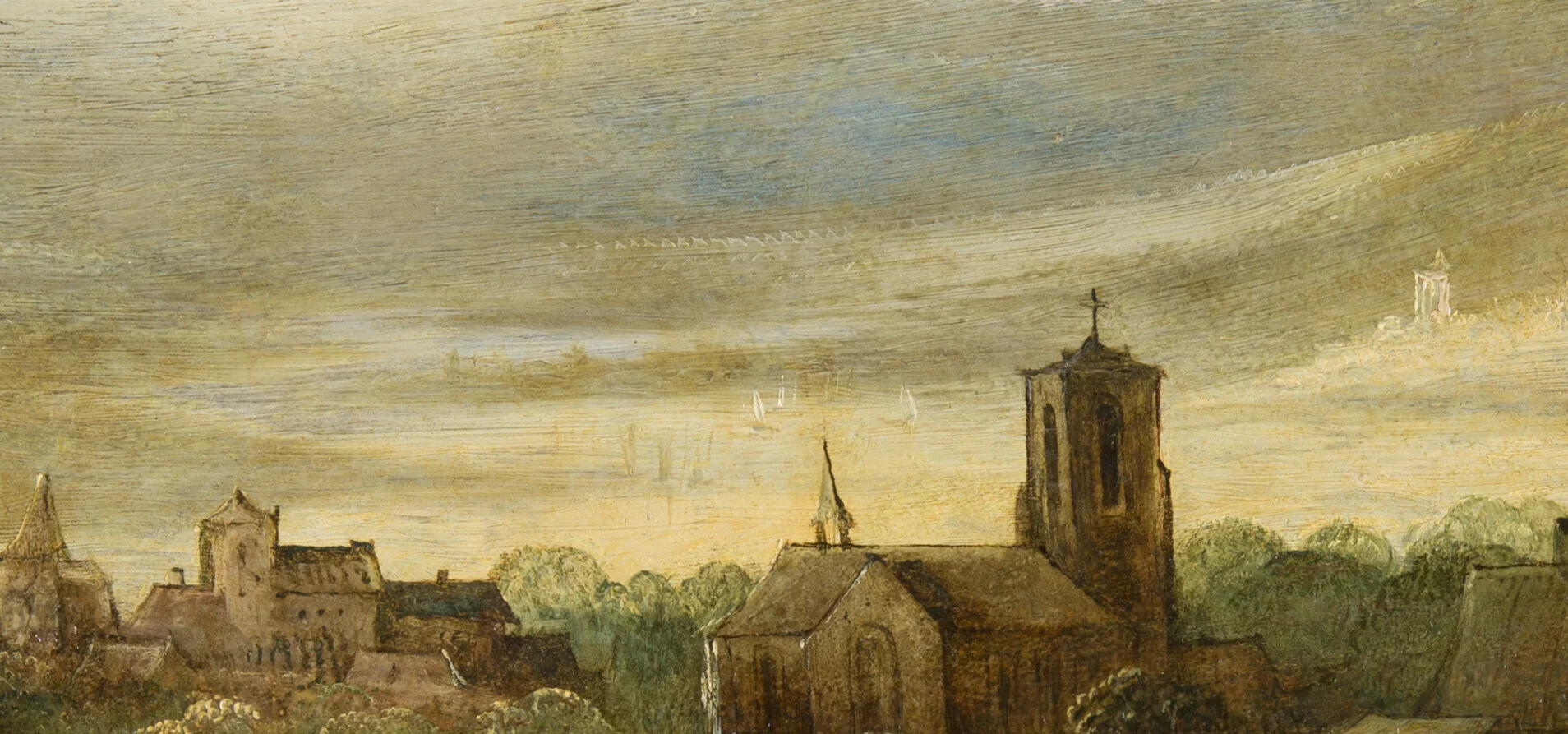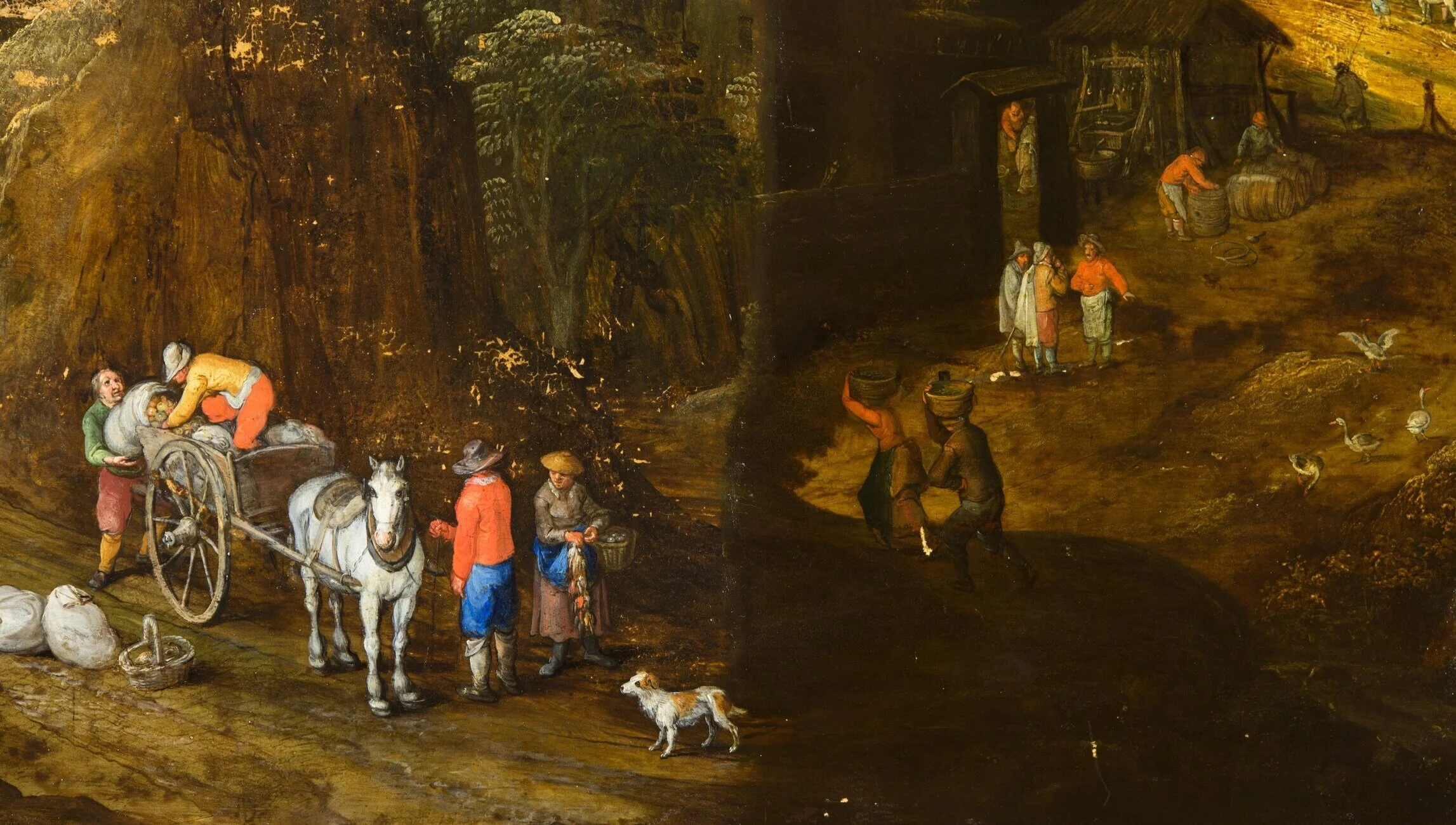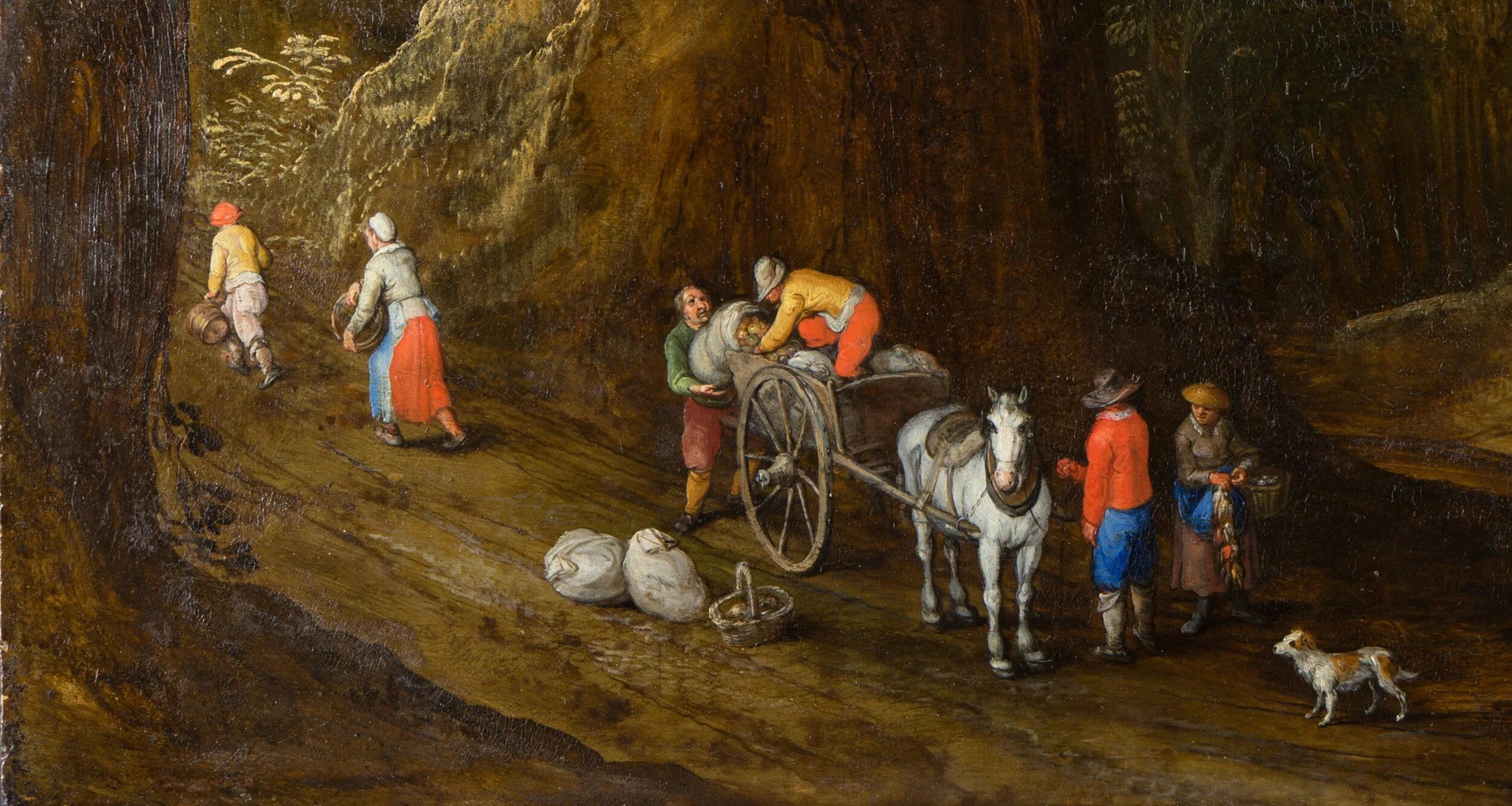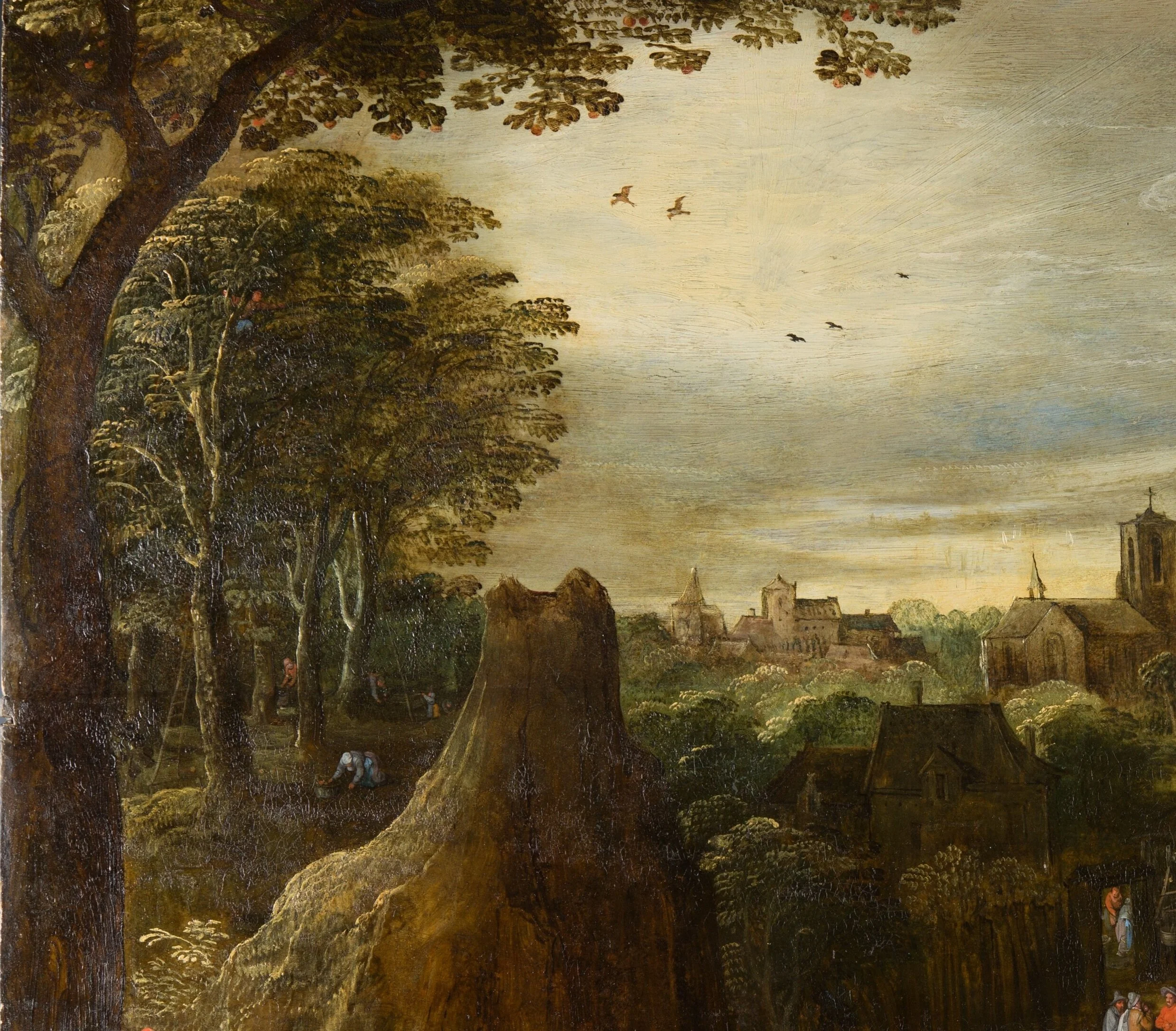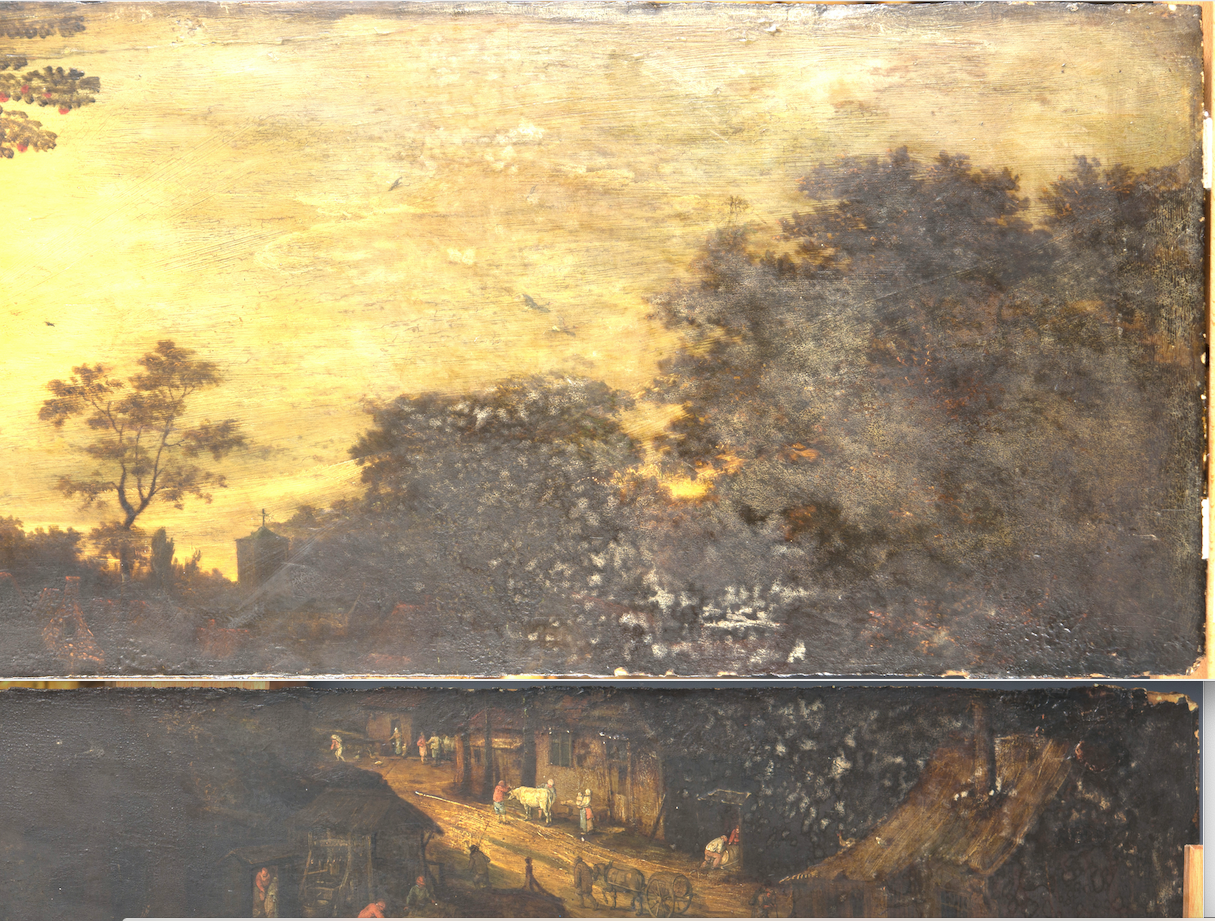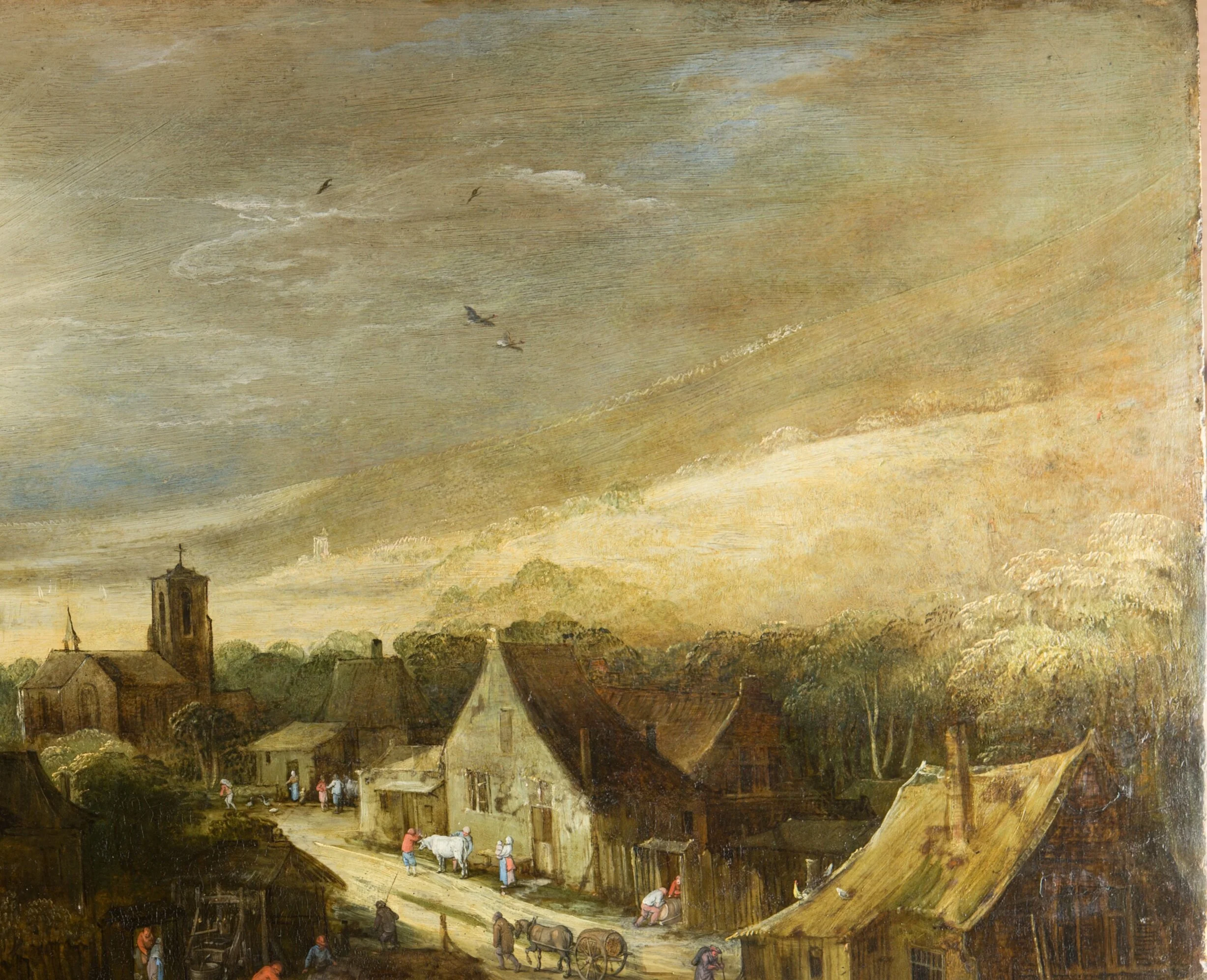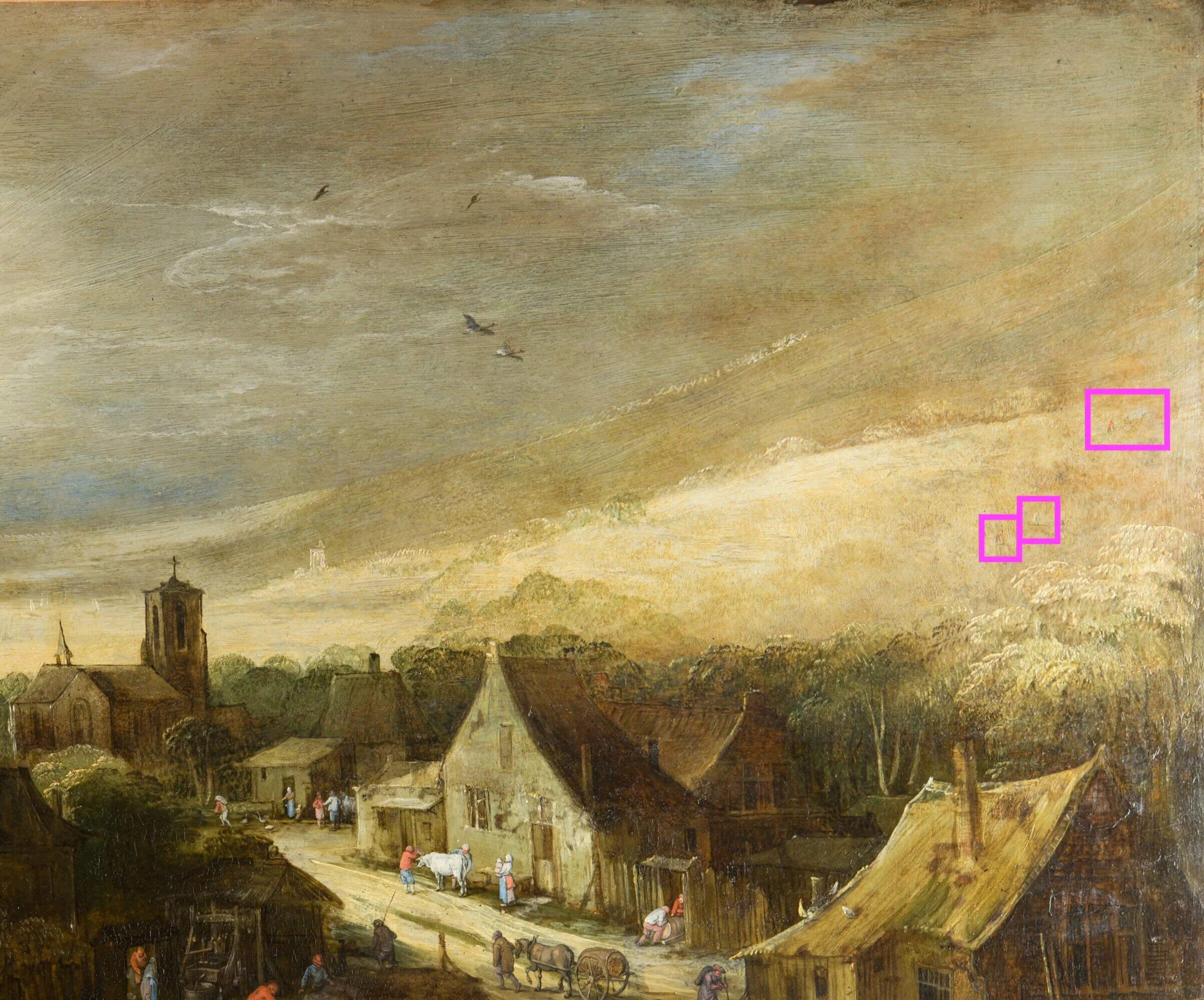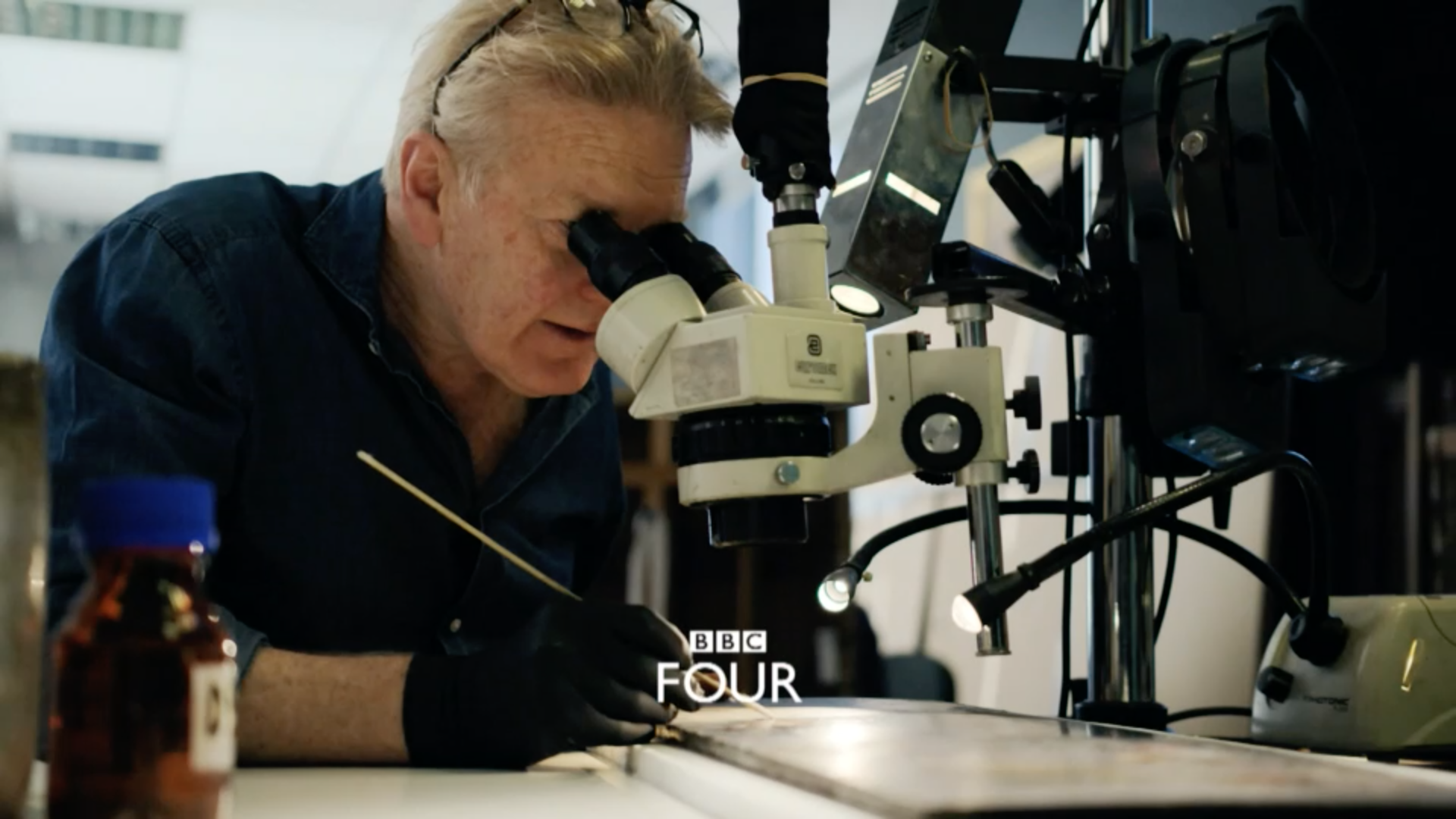‘Autumn’ by studio of Jan Brueghel the Elder and Joos de Momper
Before treatment
After treatment
This is certainly one of the most extraordinary transformations ever seen on the series ‘Britain’s Lost Masterpieces’.
The picture, which belongs to Birmingham Museums, was a prime example of a painting that belongs to the nation but is not on display because it is in such poor condition. The picture was not only broken in two pieces and covered in dirt and a yellow varnish, it also had audacious repainting by an artist or amateur restorer, possibly applied in the 18th century, covering more than half the original composition. However, what was visible of the original design allowed us to appreciate that there must be something important lying beneath. With our tailor-made system for safely cleaning off the disguising layers, we revealed original paint that was in good condition. The hours of painstaking work have certainly been worthwhile.
After treatment, the picture reveals in marvellous detail the lives of Flemish agricultural workers through the process of cider making; harvesting the apples, putting them through a cider press, and storing the cider in barrels.
Seen in the Birmingham Museums storeroom
On arrival at the studio from Birmingham Museum, where it had been kept away from public eyes in drawer, the painting was in a sorry state: the panel had split at some point during the centuries since it was made, and here were substantial layers of dirt and a frosted varnish caused by contact with moisture. The old varnishes were degraded and discoloured a deep yellow and had become dull. The central portion of the painting was mostly overpaint, creating a heavily wooded landscape. Evidently, someone had thought that they could better the existing picture. The painting was in no state to be displayed, and although it was titled “Autumn” it was very difficult to determine what lay beneath the frosted varnish. Taking paint samples and carrying out small cleaning tests revealed multiple layers of the grime of ages, yellow varnish and overpaint.
Autumn has now been dated to 1605-10 and an attribution made to two artists: the landscape by Joos de Momper (1564-1635) and the figures by the studio of Jan Breughel the Elder, possibly by the hand of Jan Breughel the Younger working in his father’s studio. Flemish artists often specialised in specific types of painting and the collaboration of portraitist and landscape painter demonstrated in Autumn is typical; exhibiting in one sublime work of art both the supreme characterisation and attention to detail of Breughel the Elder, alongside the accomplished landscape painting of de Momper.
Dr Ellen McAdam, Director of Birmingham Museums, said: “Britain’s Lost Masterpieces does a brilliant job of balancing connoisseurship, scientific research and the thrill of the chase. It was great to work with Bendor, Emma and Simon Gillespie to detect the real story of this painting. I am sure our audiences will be fascinated by its transformation. It will now take its rightful place in Birmingham’s internationally important collection of European art.”
Bendor Grosvenor said: “Seeing a whole new landscape emerge from beneath the overpaint was the most extraordinary transformation we’ve had on Britain’s Lost Masterpieces. We were so lucky to work with Birmingham Museums for this series, and I hope people enjoy seeing the painting on display in the galleries.”
The village scene, before treatment.
The same scene, after treatment. The panel has been rejoined and later overpaint removed
IR photograph (detail)
That same scene, after treatment
An infrared photograph taken before treatment picked up carbon drawing lines underneath the paint and therefore showed Brueghel’s expressive and unmistakable drawing lines, for example here in the area of the cider press (look out for the diagonal lines for the screw of the press!) with the lovely handling of the figures.
The removal of the varnish and overpaint meant that the original perspective down the road into the village can now be admired, with little groups of people engaged in lively scenes. The heavy foliage (a later addition) was removed to reveal a hillside behind the village with another church tower in the distance, and in the far distance to the left of the main church tower we see a river with sailing boats on it (see photograph below). When painting his landscapes, de Momper famously used varying tones of brown, green, and blue progressively to characterize the recession of space. Blue pigments naturally fade over time, which is why the hillside, river and sky are a yellowish-greenish-grey in the picture as we see it today.
Detail of the landscape in the background behind the church after removal of the overpaint
The painting after treatment. For comparison, the two images below, of two paintings by Jan Brueghel the Elder and Joos de Momper (taken from the Art UK website), give a sense of what this picture must have looked like before the blue pigments faded.
Farm house before treatment. Note the large varnish bloom.
The same area after treatment. Note the hens on the roof.
The area showing the apple pickers loading bags of apples into the horse-drawn cart: before treatment (left) with the overpaint, dirt, and discoloured blooming varnish. During treatment (centre) in process of removing the varnish and overpaint. After treatment (right), the details of this lovely pastoral scene have come back to life.
The central left portion of the painting before treatment, an indistinct black and yellow mass with a varnish bloom a the far left.
After treatment: the dovecote that was just discernible before treatment proved to be later overpaint, and on removal revealed a rocky outcrop. The tree rising out above the horizon was also a later addition which on removal has revealed a group of buildings, and behind it the river with sailing boats. Note the apple pickers in the woods, and the man in the tree.
During the process of cleaning the painting and removing the added top canopy of trees, small figures were found in what we had previously thought to be the sky and which turned out to be a field on the hillside in the distant landscape (below).
The upper right hand side of the painting before treatment, with dark overpainted foliage
The same after treatment, with the sweeping hillside in the background now revealed
The three figures highlighted
Detail of the three figures revealed after treatment
Behind the scenes during treatment, including a still from the trailer for Britain’s Lost Masterpieces series 4.

